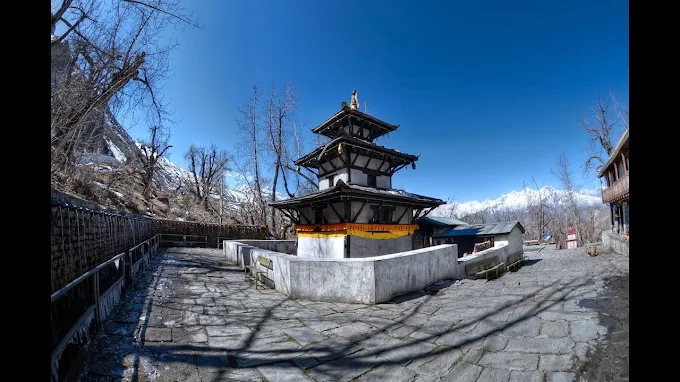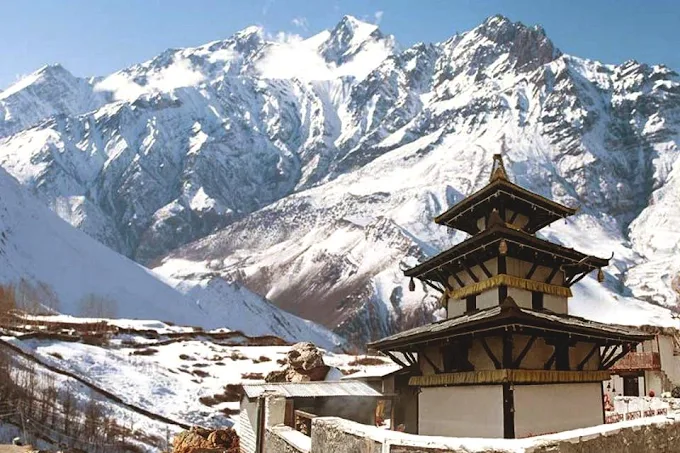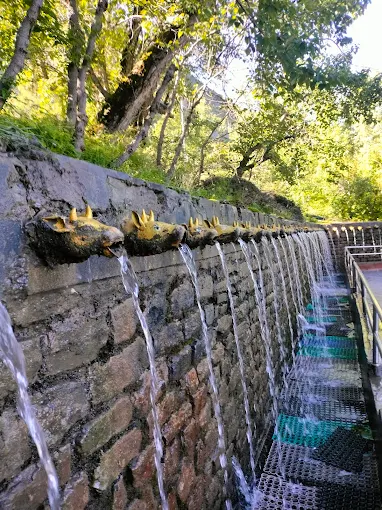- November 14, 2025

| Pilgrimage Site | Shree Murthy Shree Devi Temple, Muktinath |
|---|---|
| Main Deity/Utsava Murti | Shree Murthy, Mukti Narayanan |
| Consort | Shree Devi Nachiyar |
| Puranic Name | Tiruchalagramam |
| Teertham | Chakra Teertham, Gandaki River |
| Vimana | Kanaka Vimanam |
| Divine Name | Shree Devi Nachiyar Sametha Shree Moorthiye Namaha: |
| Mangalasasanam | Thirumangai Azhwar, Periyazhwar |
| Village | Salagramam [Muktinath] |
| District | Mustang |
| Country | Nepal |
In our spiritual world, there are some places that combine the beauty of nature and divine power. One such sacred place is the Shree Murthy Temple in Nepal, also known as Muktinath Temple. Located at an altitude of 3,710 meters in the lap of the majestic Himalayas, this temple is equally sacred to both Hindus and Buddhists. It is believed that a pilgrimage here grants salvation (mukti) from the cycle of birth and death. In this article, we will explore the history, significance, how to get there, and the best time to visit this temple in detail – to help you plan your spiritual journey!
The origin of the Muktinath Temple is connected to ancient legends. The current pagoda-style temple was built in 1815 by Queen Subarna Prabha Devi of Nepal. According to the Puranas, when Goddess Tulasi (Vrinda) cursed Vishnu, he turned into Salagrama stones. It is believed that these stones are formed in the Kali Gandaki River, where Vishnu performed penance and attained salvation.
Another story says that Vrinda, the daughter of King Dharmadhvajan, performed penance to marry Narayana. When she cursed Vishnu, he turned into a stone, and later, he merged with her and took an eternal avatar in this place. In the Hindu Vaishnava tradition, Muktinath is revered as the 70th of the 108 Divya Desams, glorified by the hymns of Thirumangai Azhwar and Periyazhwar.
For Buddhists, it is called ‘Chumig Gyatsa’ (100 waters), a place where Guru Rinpoche (Padmasambhava) meditated. In fact, this is a rare place where Hindus and Buddhists worship together!

It is believed that bathing in the 108 Mukti Dhara (springs) and the two ponds (Papa Kundam, Punya Kundam) found in this temple washes away sins.

The pagoda-style temple features a copper statue of Vishnu in the Padmasana posture, with Shree Devi and Bhoodevi (Lakshmi, Saraswati) beside him. There are also idols of Ganesha, Buddha, Garuda, and Ramanuja. Behind the temple are 108 spouts in the shape of a cow’s head – a magnificent sight!
The journey to Muktinath is a mix of adventure and spirituality. It is 197 km from Pokhara and 377 km from Kathmandu.
An ACAP permit is mandatory; acclimatization is required due to the high altitude. You can stay in places like Jomsom and Kagbeni.
Pasuram: Periya Thirumozhi (987)
Kalaiyum kariyum parimavum
thiriyum kaanam kadanthupoy
Silaiyum kanaiyum thunaiyaach
sendran vendri s’erukkalaththu
Malai kondu alai neer anai katti
madhil neer ilankai vaal arakkar
Thalaivan thalai paththu aruththu ukanthan
Salagramam adai nenje
March-June or September-November – the weather is pleasant, and the mountain views are clear. The monsoon season (June-August) carries the risk of landslides; the winter season (up to -15°C) is for snow lovers.
Morning and evening aarti are performed by Hindu priests, while the afternoon worship is done by Buddhist nuns.
Muktinath Temple is not just a destination – it is a gateway to the liberation of the soul. The beauty of the Himalayas, the glory of the legends, and the fusion of two religions – all will make your journey unforgettable. Plan, go, and attain salvation!
Pilgrimage Site, Muktinath 33100, Nepal